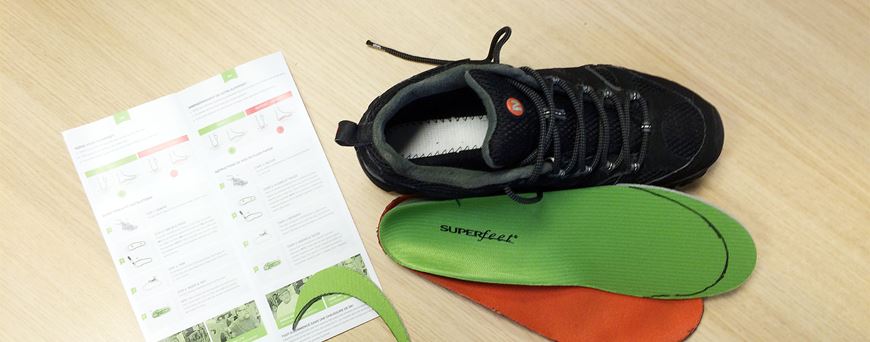I've written before about how I find the soles of some footwear, particularly Vibram ones, quite hard on my shins and weak knees. Even though I'm only in my mid-30s, I often feel like my knees have been going a couple of decades longer than the rest of me!
Despite that, I'm something of a latecomer to orthotic insoles.
Superfeet have been around longer than I have - since 1977 to be precise - and apply some pretty interesting science.
We might take them for granted, but our feet adapted and evolved to suit a rough and complex terrain. It seems that the flat and hard surfaces of modern day life are not an ideal match.
Generally, the insoles that get supplied with footwear are as two dimensional as the midsoles of a shoe or boot itself, but our feet have more shape to them than that. Orthotics use the principles of podiatric medicine to support the natural way that our muscles, bones, tendons and ligaments move.
This results in a better fit between your shoe and your foot - regulating foot positioning, increasing comfort, and easing any foot, ankle, knee, hip and back aches and pains. For instance, orthotics are a common treatment for plantar fasciitis and similar conditions.
Superfeet footbeds (just a fancy name for insoles, don't worry) employ three key elements to provide support and shock absorption for the rearfoot, where most of our movements start. There's a structured heel cup to align your foot and maximise the natural cushioning of your heel, support for the rearfoot, and a firm foam base.
The organic odour control coating helps keep the insoles in a pleasant condition too (though you may still want to air them fairly regularly).
The insoles are available in three profiles and volumes - low, medium and high - and it's important to understand which are most appropriate for you.
The green Superfeet are for people with high profile arches. They have the deepest and widest support and are best used in roomier footwear.
Blue insoles are more suited to people with medium profile arches and will fit into shoes and boots with less room available. (These might have been a better choice for my Merrell Moabs to be honest.)
Finally, black insoles have a lower profile and are appropriate for tighter fitting footwear, such as golf shoes.
My green trim-to-fit insoles were easy enough to customise - and it's much less daunting than you might imagine. Simply remove your existing insole (in my case, the basic Ortholites supplied with my Moabs), line up the heel and inside edge of the two insoles, and trace the shape of the old insole onto the Superfeet.
Once you have the line, trim with scissors (erring on the side of caution - you can always trim more off), and then pop the new insoles into your shoes. Make sure that the insole can move forward and back a little, so that it works with your natural foot movement - and you're done.
It isn't exactly tricky - and it's a big plus that you can make sure the insoles fit your footwear exactly.
It's surprising once you've got your shoes back on just how much better support for your heels and arches affects your stance. Don't be surprised if you find it slightly uncomfortable initially, as the insoles definitely take a bit of getting used to.
If you're anything like me, you might well scuff your feet along some perfectly flat bits of ground to begin with!
However, the more you wear them in, the more you begin to see and feel the difference in how your feet cope with exercise and other punishment.
At £35 a pair (or £40 for some of the very fancy Merino ones), Superfeet are not exactly cheap. Particularly if you choose to fit them to multiple pairs - with slightly different trim shapes needed in each case.
On that basis it's worth getting your first pair fitted properly - someone like Cotswold Outdoor will be happy to help, and it'll still be considerably cheaper and less hassle than made-to-measure orthotics would.
There are lower cost options on the market and you may prefer to try the likes of Grangers, Sorbothane, Sof Sole or Ortholite. However, Superfeet are certainly very well made, and are often recommended on walking forum websites.
That and the 40 year company history are reassuring for a first-timer like me.
Some people might prefer a more subtle colour, but overall I'm pretty impressed! Well constructed and high quality materials
Pros
Well constructed product, using high quality materials and coming from a respected name.
Cons
A bit pricey. Change in stance takes some getting used to, and more subtle colours would be good.
Recommended Use
Anyone suffering with diagnosed foot pain.












